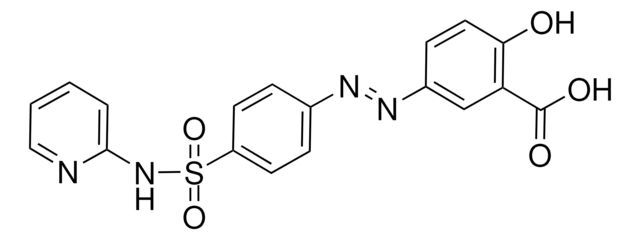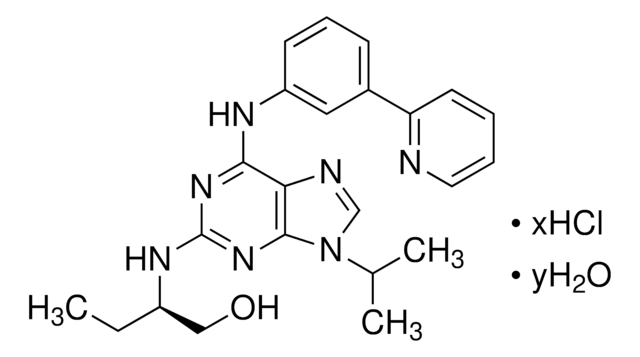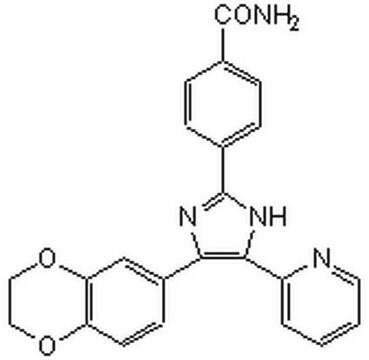推荐产品
化驗
≥98% (HPLC)
形狀
powder
顏色
white to tan
溶解度
DMSO: ≥15 mg/mL
儲存溫度
2-8°C
SMILES 字串
CC(C)N(C=N1)C2=C1C(NCC3=CC(C(F)(F)F)=CC=C3)=NC=N2
InChI
1S/C16H16F3N5/c1-10(2)24-9-23-13-14(21-8-22-15(13)24)20-7-11-4-3-5-12(6-11)16(17,18)19/h3-6,8-10H,7H2,1-2H3,(H,20,21,22)
InChI 密鑰
REKSFCCYDQMSIN-UHFFFAOYSA-N
應用
Longdaysin may be used to study cell signaling that regulate the circadian clock and behavior.
生化/生理作用
Longdaysin inhibits CK1, ERK2, and CDK7 kinases in low mM concentrations. The activity of longdaysin results in a lengthening of circadian periods in cell based and in vivo systems. Transgenic zebrafish harboring a per3-luc reporter gene displayed a 10 hour lengthening of circadian period when treated with longdaysin. Longdaysin reduces the phosphorylation of PER1 the regulator of molecular clock function and manipulates the circadian clock.
訊號詞
Danger
危險分類
Acute Tox. 3 Oral - Eye Irrit. 2 - Repr. 2 - Skin Irrit. 2 - STOT SE 3
標靶器官
Respiratory system
儲存類別代碼
6.1C - Combustible acute toxic Cat.3 / toxic compounds or compounds which causing chronic effects
水污染物質分類(WGK)
WGK 3
閃點(°F)
Not applicable
閃點(°C)
Not applicable
Tsuyoshi Hirota et al.
Science (New York, N.Y.), 337(6098), 1094-1097 (2012-07-17)
Impairment of the circadian clock has been associated with numerous disorders, including metabolic disease. Although small molecules that modulate clock function might offer therapeutic approaches to such diseases, only a few compounds have been identified that selectively target core clock
Urs Albrecht
Handbook of experimental pharmacology, (217)(217), 227-239 (2013-04-23)
Circadian clocks are present in nearly all tissues of an organism, including the brain. The brain is not only the site of the master coordinator of circadian rhythms located in the suprachiasmatic nuclei (SCN) but also contains SCN-independent oscillators that
Tsuyoshi Hirota et al.
PLoS biology, 8(12), e1000559-e1000559 (2010-12-24)
The circadian clock underlies daily rhythms of diverse physiological processes, and alterations in clock function have been linked to numerous pathologies. To apply chemical biology methods to modulate and dissect the clock mechanism with new chemical probes, we performed a
Sandipan Ray et al.
Life science alliance, 2(6) (2019-12-04)
Determining the exact targets and mechanisms of action of drug molecules that modulate circadian rhythms is critical to develop novel compounds to treat clock-related disorders. Here, we have used phenotypic proteomic profiling (PPP) to systematically determine molecular targets of four
我们的科学家团队拥有各种研究领域经验,包括生命科学、材料科学、化学合成、色谱、分析及许多其他领域.
联系技术服务部门










